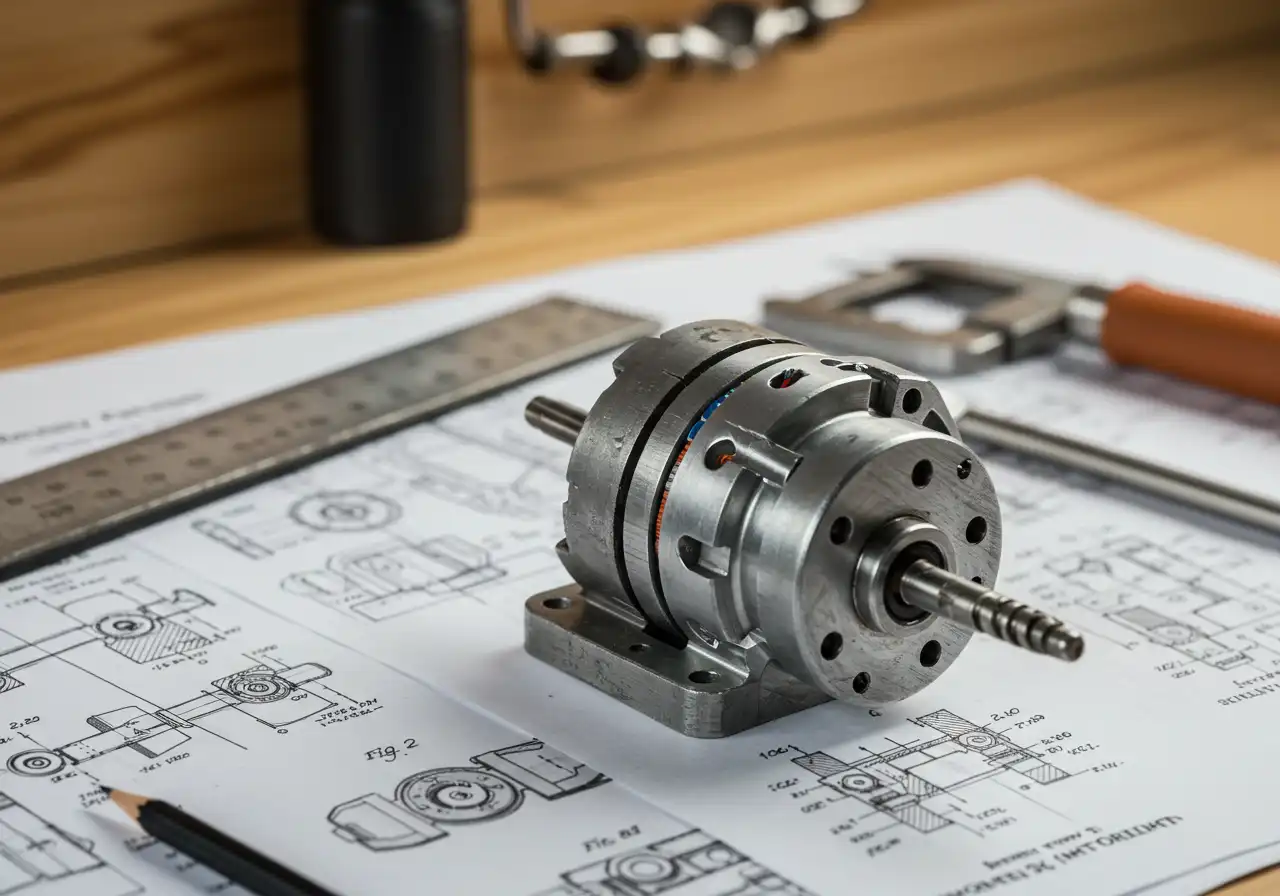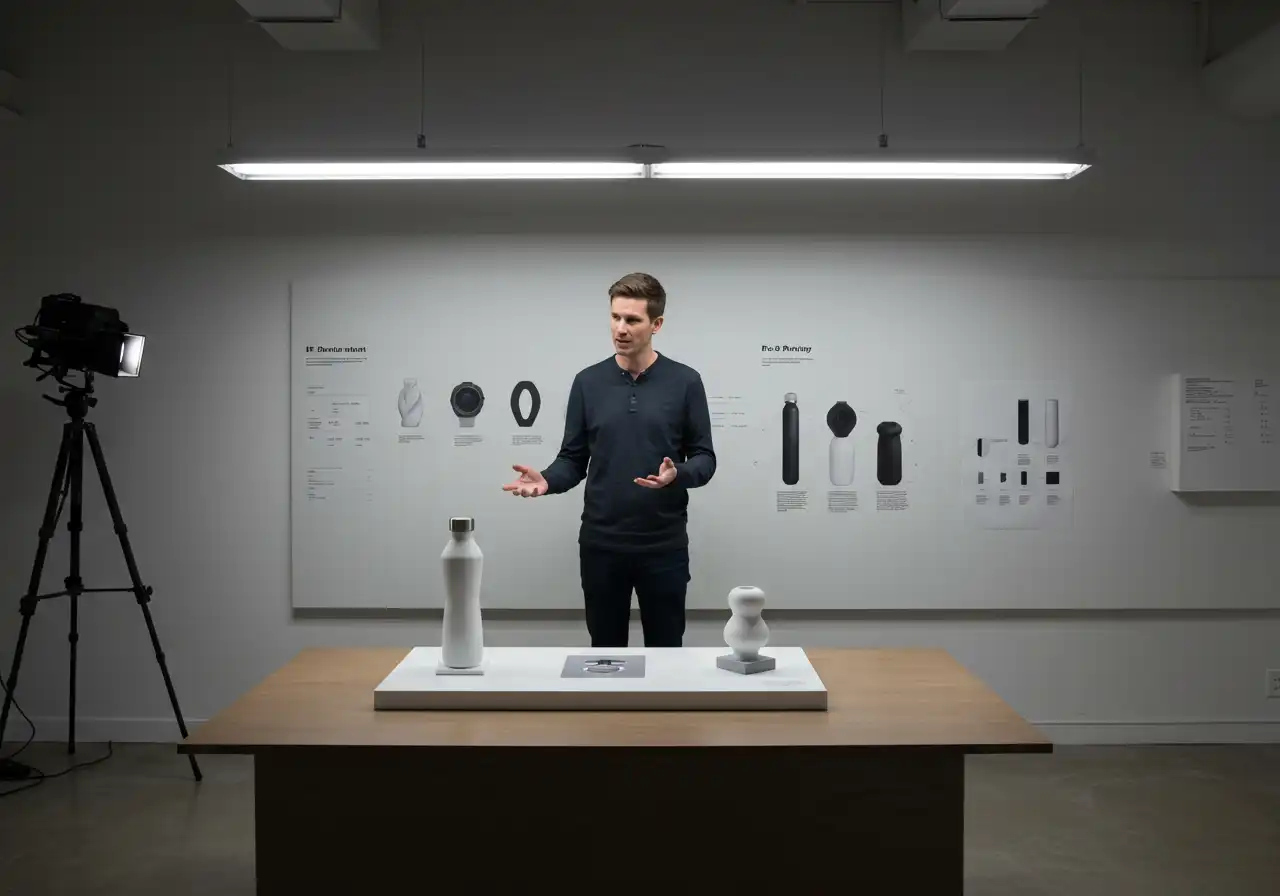Understanding Utility vs. Design Patents: Which Is Right for Your Idea?
Protecting your intellectual property is crucial for maintaining the competitive edge of your invention. When considering patent protection, you will encounter two primary types: utility patents and design patents.
- Utility patents safeguard the functional aspects of an invention—how it works, its structure, composition, or function.
- Design patents protect the ornamental appearance of an article, including its shape, configuration, surface ornamentation, or overall visual design.
In this article, you’ll learn:
- The definitions and purposes of both utility and design patents.
- The processes involved in applying for each type of patent.
- How to determine which type of patent is right for your idea.
- The potential for dual protection using both utility and design patents.
By understanding these distinctions, you can make informed decisions on how best to protect your innovative ideas.

Understanding Utility Patents
A utility patent is the most common type of patent issued by the United States Patent and Trademark Office (USPTO). Its primary function is to protect the functional aspects of an invention—how something works, its structure, composition, or function. This legal protection prevents others from making, using, selling, or importing an invention that performs the same function in the same way as described in your patent claims.
Types of Inventions Protected by Utility Patents
Utility patents cover a broad spectrum of innovations, including:
- Machines: Devices with moving parts or mechanical elements.
- Example: A new type of engine, a robotic vacuum cleaner.
- Processes: Methods of doing or making something.
- Example: A method for purifying water, a software algorithm for data encryption.
- Articles of Manufacture: Items made through manufacturing processes.
- Example: Plastic containers with innovative sealing mechanisms.
- Compositions of Matter: Chemical compounds, mixtures, or formulas.
- Example: Pharmaceutical drugs, synthetic polymers.
- Improvements: Enhancements to any existing process, machine, article, or composition.
- Example: A modification that increases battery life in smartphones.
Duration and Maintenance Requirements
A utility patent grants exclusive rights for a fixed period—a 20-year term starting from the date you file your application. To keep these rights active throughout that period:
- Maintenance fees must be paid at regular intervals (typically at 3.5, 7.5, and 11.5 years after the grant).
- Failure to pay these fees results in expiration and loss of protection.
This structure incentivizes inventors to commercialize their inventions while ensuring patented technology eventually enters the public domain.
Protection under a utility patent focuses on what your invention does and how it achieves its results—the mechanisms behind innovation rather than its visual design.
Applying for a Utility Patent
Application Process
To apply for a utility patent, you need to follow a structured process:
- Conduct a Patent Search: Before filing, ensure your invention is novel by searching existing patents.
- Prepare the Application:
- This includes:
- A detailed description of the invention.
- Claims defining the scope of protection.
- Drawings, if necessary, to illustrate the invention.
- An abstract summarizing the invention.
- File with the USPTO: Submit your application to the United States Patent and Trademark Office (USPTO) along with the required fees.
- Examination Process: An examiner reviews your application to determine if it meets all legal requirements.
Timeframe and Challenges
The timeframe for obtaining a utility patent typically ranges from 2 to 5 years. Several challenges can arise during this period:
- Complexity: The detailed nature of the application requires precise documentation and clarity in technical descriptions.
- High Rejection Rate: Initial rejections are common due to reasons such as lack of novelty or non-obviousness. You may need to amend your claims or provide additional information.
- Costs: Legal and maintenance fees can accumulate, making it an expensive endeavor.
Understanding these potential obstacles helps prepare you for what lies ahead in securing your utility patent.

Understanding Design Patents
Design patents protect the ornamental appearance of a product rather than its function. When you seek a design patent, you’re claiming exclusive rights to the unique shape, configuration, surface ornamentation, or visual design features that make your product stand out in the marketplace. The purpose is to prevent others from copying a product’s distinctive look, which can be a critical advantage in crowded consumer categories.
Key elements protected by design patents:
- Shape: The outline or contour of an object. For example, the iconic curvy bottle shape of Coca-Cola is protected by a design patent.
- Configuration: The arrangement or combination of parts in a product. Think of how different smartphone manufacturers use unique camera bump layouts as part of their brand identity.
- Surface Ornamentation: Decorative elements applied to the surface of an item. A unique pattern on a shoe or an embossed logo on headphones often falls into this category.
- Visual Design: The overall visual impression created by the product’s external features. Apple’s original iPhone design was protected because of its minimalist face and rounded edges.
Design patent protection does not extend to how an invention works or is used—only its appearance counts. You’ll see design patents frequently used for consumer electronics, furniture, packaging, jewelry, and even medical devices, where aesthetics play a significant role.
Understanding the difference between utility and design patents hinges on whether your primary concern is protecting how your invention looks or how it functions.
Applying for a Design Patent
Securing a design patent starts with a clear understanding of the application process and the expectations for approval. The focus is on protecting the unique visual appearance of your product, not its function.
Step-by-Step Guide to the Design Patent Application Process
- Document the Design: Prepare high-quality drawings or photographs that showcase every angle and aspect of your design. The U.S. Patent and Trademark Office (USPTO) requires precise visual disclosure since this defines your claim.
- Draft the Specification: Write a brief description emphasizing what is novel and distinctive about the design. The written component is less extensive than for utility patents but must clearly support the visuals.
- File the Application: Submit your application electronically through the USPTO’s EFS-Web or by mail, including all required forms, drawings, and fees.
- USPTO Review: An examiner reviews whether your design meets requirements for novelty and non-obviousness. Communication during this phase is less frequent than with utility applications.
- Respond to Objections (if any): If objections arise, respond promptly—often by clarifying drawings or amending claims.
- Approval and Grant: Once approved, you receive a notice of allowance followed by a formal grant.
Timeframe for Approval
- Most design patent applications reach approval within 12 to 24 months.
- Costs are typically lower than utility patents, with fewer legal hurdles in prosecution.
Comparing With Utility Patents
- Design patent applications require less technical documentation—no need for detailed claims or exhaustive written descriptions.
- The review process is generally faster and less complex; utility patents often face lengthy examination cycles due to stricter requirements around usefulness and inventive step.
- Maintenance fees are not required after the grant, unlike utility patents, which demand periodic payments to remain active.
Design patent applicants benefit from a more streamlined process focused on aesthetics rather than engineering specifics, making this route especially attractive for consumer products where appearance drives value.
Dual Protection: Utility and Design Patents Together?
Applying for Both Patents on the Same Product
You can apply for both utility and design patents on the same product if it has both functional and ornamental features. This dual protection ensures that you safeguard not only how your invention works but also how it looks. For instance:
- A smartphone may have a utility patent for its innovative touch-screen technology (functional feature) and a design patent for its unique exterior design (ornamental feature).
- A kitchen appliance might have a utility patent covering its mechanical functionality and a design patent for its sleek, modern appearance.
Infringement Determinations
Understanding how infringement determinations differ between utility and design patents is crucial:
- Utility Patent Infringement: To determine infringement, the accused product must contain every element of at least one claim in the utility patent. This means that the focus is on whether the functional aspects of your invention have been copied.
- Design Patent Infringement: The key question here is whether an ordinary observer would find the accused design substantially similar to the patented design. This focuses on the visual similarities rather than the functional aspects.
Considering both types of protection can provide robust coverage for your invention, addressing both its practical utility and aesthetic appeal.

Choosing the Right Patent for Your Idea
Selecting between utility and design patents requires careful consideration of several factors. Evaluating your invention’s primary attributes is crucial to making an informed decision.
Factors to Consider
- Functional vs. Ornamental Features: If your invention’s functionality or structure is its key innovation, a utility patent is appropriate. Examples include new machinery, processes, or compositions. If the invention’s visual appearance or design is its main selling point, opt for a design patent.
- Market Focus: Consider your target market. Consumer goods often benefit from design patents due to aesthetic appeal, while industrial equipment typically requires utility patents for functional protection.
- Budget and Timeframe: Utility patents are more expensive and time-consuming to obtain compared to design patents. Assess your budget and the urgency of protection needed.
- Longevity of Protection: Utility patents offer 20 years of protection from the filing date, while design patents provide 15 years from the grant date. Decide based on how long you need exclusive rights.
Determining the Best Fit
To determine which type of patent best suits your invention:
- Identify Core Innovation: Ask yourself whether the unique aspect of your invention lies in its functionality or appearance.
- Conduct Market Research: Analyze competitors and industry standards to see what type of patent they rely on.
- Consult with Professionals: Patent attorneys can provide valuable insights tailored to your specific situation.
Understanding Utility vs. Design Patents is crucial in protecting your intellectual property effectively. Evaluate these factors carefully to decide which patent type aligns with your invention’s needs and strategic goals.
Conclusion
Choosing between utility and design patents shapes the direction of your intellectual property strategy. The inventors’ decision-making process hinges on asking the right questions: Does your idea center on how something works, or on how it looks?
- Utility patents protect functionality, processes, and structures.
- Design patents shield ornamental appearance and visual uniqueness.
Both options carry specific benefits, requirements, and legal standards for infringement. Skipping a careful evaluation risks leaving essential features unprotected or overspending for unnecessary coverage.
Patents are legal tools—using them wisely means understanding their strengths and limitations.
If doubts linger about utility vs. design patents, consulting with a qualified patent attorney is highly recommended. Professional guidance helps avoid costly errors and maximizes your invention’s value in the marketplace. Protecting your innovation starts with making informed choices.
